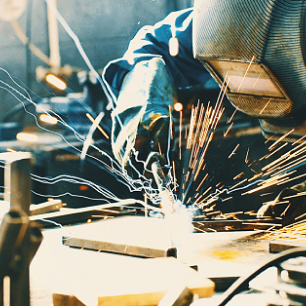Jump to:
When Your Weld Carries 18-Wheelers: Why Precision Matters in Bridge Construction
Bridges don’t care if you’re having an off-day. Whether it’s freezing rain, blazing heat, or a tight jobsite timeline, every weld on a bridge has a job to do—and it can’t afford to clock out early.
If you work in bridge welding, you already know the stakes. You're not just joining steel; you're building the connections that carry school buses, fire trucks, and big rigs barreling across the country at 70 miles per hour. That kind of pressure doesn’t just demand skill—it demands absolute confidence in every part of your process, including the code you follow.
Why the Code Has to Keep Up
That’s where AASHTO/AWS D1.5M/D1.5, Bridge Welding Code (D1.5) comes in. Jointly published by the American Association of State Highway and Transportation Officials (AASHTO) and the American Welding Society (AWS), D1.5 is the go-to code for welding on highway bridges—and it’s just been updated.
The changes reflect the way bridges are designed, fabricated, and maintained today. That includes clearer requirements, updated references, and improved guidance to help inspectors, engineers, and welders work from the same playbook—no second-guessing required.
From the Shop to the Span
From fabricating box girders to inspecting field welds in a confined space, the updated D1.5 supports bridge welding work throughout the project lifecycle. Need to interpret design drawings, prep base metal, or navigate nondestructive testing? It's all in there. This code helps teams align on accepted practices in bridge welding and inspection.
The Bottom Line
For those responsible for the strength and safety of structures used by thousands each day, there's no room for error. Precision isn't a bonus—it's a baseline. And that means your welding code can’t be out of date, out of sync, or out of touch.
D1.5M/D1.5:2025 is here to keep your work sharp, team aligned, and welds ready for the long haul.


